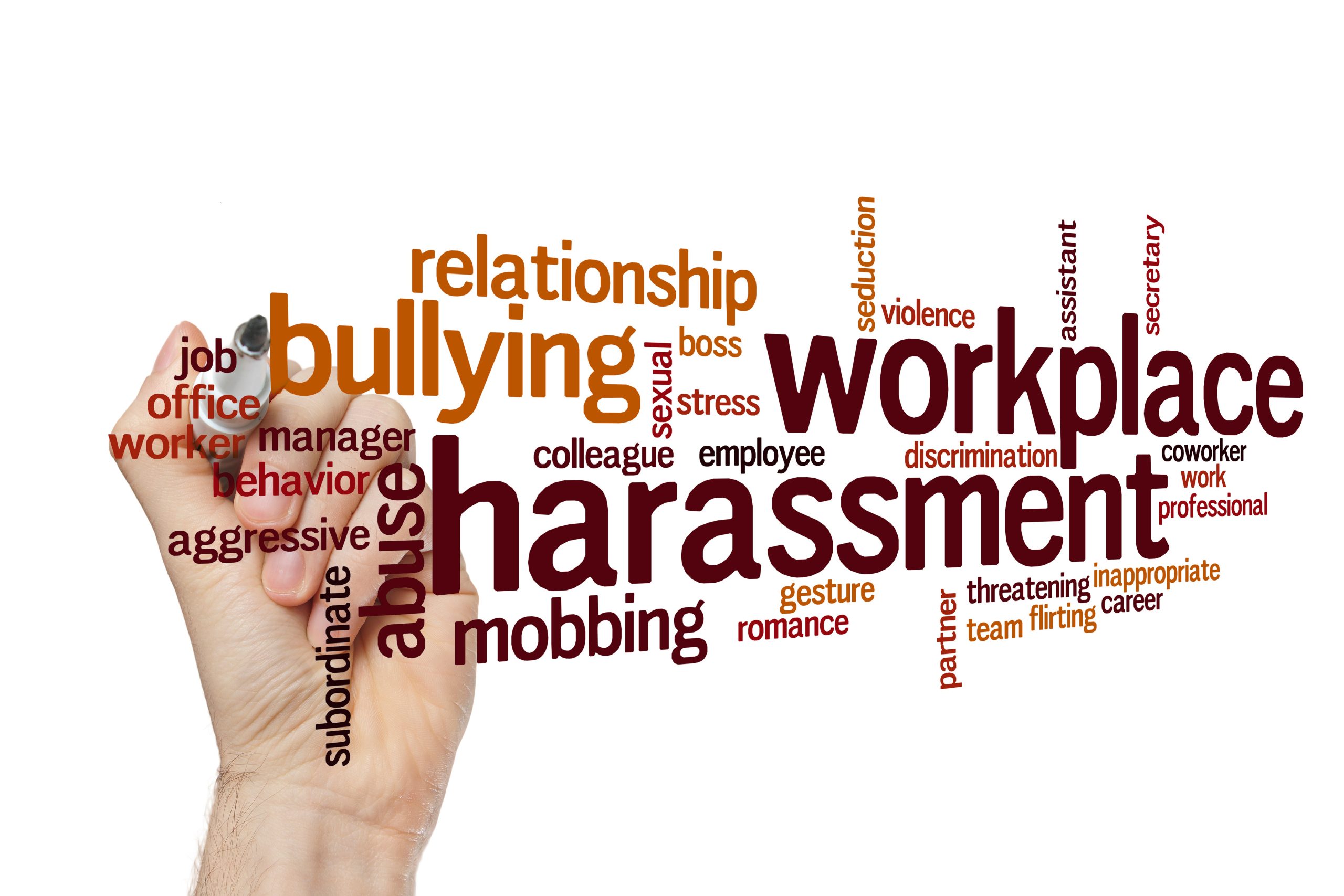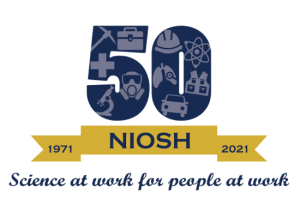May 4, 2023 | Posted by MICRO

In the 1980’s a series of shootings at post offices drew public attention towards the issue of workplace violence. While mass shootings receive a lot of media attention, they actually account for a small number of workplace violence events. NIOSH has been studying workplace violence since the 1980s. In 1993, NIOSH released the document Preventing Homicide in the Workplace. This was the first NIOSH publication to identify high-risk occupations and workplaces.
The research revealed that taxicab establishments had the highest rate of workplace homicide–nearly 40 times the national average and more than three times the rate of liquor stores which had the next highest rate. NIOSH worked to further inform workers and employers about the risk and encourage steps to prevent homicide in the workplace in the 1996 document Violence in the Workplace which reviewed what was known about fatal and nonfatal workplace violence to focus needed research and prevention strategies. The document addressed workplace violence in various settings such as offices, factories, warehouses, hospitals, convenience stores, and taxicabs, and identified risk factors and prevention strategies.
Workplace violence is the act or threat of violence, ranging from verbal abuse to physical assaults directed toward persons at work or on duty. The impact of workplace violence can range from psychological issues to physical injury, or even death. Violence can occur in any workplace and among any type of worker, but the risk for fatal violence is greater for workers in sales, protective services, and transportation, while the risk for nonfatal violence resulting in days away from work is greatest for healthcare and social assistance workers.
There continues to be groups of workers who are disproportionately affected by workplace violence. In 2013, NIOSH researchers contributed to a publication focused on health disparities and inequalities. [i] Number and rates of homicide deaths over a 5-year span for industry and occupation groups were presented by race/ethnicity and nativity. Further analyses published in 2014 in the American Journal of Industrial Medicine controlling for other factors reported elevated homicide rate ratios for workers who are Black, American Indian, Alaska Natives, Asian, or Pacific Islanders, and those who were born outside of the United States.[ii] NIOSH researchers continue to work towards identifying disparities where they exist so we can better focus our research and translation efforts to the workforces and communities of workers that need them. See below for examples of research conducted by NIOSH on identifying disparities in specific workforces.
Health Care
In the late 1990s and early 2000s, U.S. healthcare workers accounted for two-thirds of the nonfatal workplace violence injuries in all industries involving days away from work.[iii] To address the issue of violence in healthcare, in 2002, NIOSH published Violence: Occupational Hazards in Hospitals which discussed prevention strategies in terms of environmental (installing security devices), administrative (staffing patterns), and behavioral (training).
NIOSH and its partners recognized the lack of workplace violence prevention training available to nurses and other healthcare workers. To address this need, in 2013, NIOSH and healthcare partners developed a free on-line course aimed at training nurses in recognizing and preventing workplace violence. This award-winning course, Workplace Violence Prevention for Nurses, has been completed by more than 65,000 healthcare workers. Violence remains an issue for healthcare workers. Home healthcare workers are also at risk for violence as they work closely with patients and often are in close contact with the public while they provide healthcare services to patient. The issue of violence in home healthcare will likely increase as the industry is projected to grow dramatically in the coming years.
Convenience Stores
Robbery-related homicides and assaults are the leading cause of death in retail businesses. In 2019, workers in convenience stores had a 14 times higher rate of deaths due to work-related violence than in private industry overall (6.8 homicides per 100,000 workers vs. 0.48 per 100,000 workers). With these deaths are disparities among the homicide victims. Specifically, Black, Asian, and Hispanic men have disproportionately higher homicide rates than white men. Additionally, foreign-born men have disproportionately higher homicide rates than U.S.-born men, and men 65 and older have disproportionately higher homicide rates than any other age group.[iv]
NIOSH research demonstrated that retail establishments using Crime Prevention Through Environmental Design (CPTED) programs, which suggest that environments can be modified to reduce robberies, experienced 30%–84% decreases in robberies and a 61% decrease in non-fatal injuries. A recent analysis of crime reports spanning 10 years found robbery rates decreased significantly in convenience stores and small retail establishments after a Houston ordinance based on CPTED countermeasures became effective.[v]
Taxicab Drivers
Driving a taxi remains a dangerous job. The most serious workplace violence issues facing taxi drivers are homicide and physical assaults which are often related to a robbery. Deaths due to workplace violence among taxi drivers occur disproportionately among drivers who are men (6 times higher than women), drivers who are Black or Hispanic (double that of drivers who are Non-Hispanic and White), and drivers in the South United States (almost triple that of drivers in Northeast).[vi] NIOSH research evaluated the effect of cameras installed citywide on taxi driver homicide rates in 26 U.S. cities spanning 15 years and found those cities with camera-equipped taxis experienced a 3-fold reduction in driver homicides compared with control cities. [vii] NIOSH and the Occupational Safety and Health Administration together identified prevention measures to reduce the risk of violence including increasing visibility into the taxi, minimizing cash transactions, and security measures such as security cameras, silent alarms, and bullet-resistant barriers. [viii]
Teachers and School Staff
In 2008, NIOSH undertook a large state-wide study to measure physical and non-physical violence directed at teachers and school staff in Pennsylvania. Working with national, state, and local education unions, the study described and quantified physical workplace violence against teachers and school staff and measured the impact of violence on job satisfaction and the mental health of teachers and staff. Some of the most significant findings from that study include:
- Special education teachers were at the highest risk of all teachers and school staff for both physical and nonphysical workplace violence.
- While physical assaults were rare, non-physical violence was not. Over 34% of teachers and school staff had experienced either bullying, threats, verbal abuse, or sexual harassment. Coworkers were the most common source of the violence.
- Both physical and non-physical violence significantly impacted teachers and school workers’ job satisfaction, stress, and quality of life. Those who experienced physical violence were over 2 times more likely to report work as stressful, 2.4 times more likely to report dissatisfaction with their jobs, 11 times more likely to consider leaving the education field and had a higher mean number of poor physical health and mental health days.
- This study highlighted the need for specific prevention efforts and post-event responses that address the risk factors for violence, especially among special education workers. [ix] [x]
Workplace Violence During the COVID-19 Pandemic
Over the last 50 years, NIOSH has seen changes in the risk of workplace violence. The COVID-19 pandemic has presented unique instances of workplace violence. Since the pandemic began in early 2020, U.S. media have reported on retail workers and workers in other industries being verbally assaulted, spit on, and physically attacked while enforcing COVID-19 mitigation practices such as mask wearing or physical distancing. Several international studies have examined violence toward healthcare personnel during the pandemic. Unfortunately, the significant time-lag from the occurrence of these events to data delivery using traditional occupational safety and health surveillance sources means that COVID-19-related workplace violence data will not be available for some time. To address this lag, NIOSH has undertaken multiple studies that used media reports to provide more timely information on the number and characteristics of workplace violence events (WVEs) occurring in U.S. workplaces in the early phases of the COVID-19 pandemic. Preliminary results from the unpublished analysis reveal:
- At least 400 WVEs related to COVID-19 were reported in the media between March 1 and October 31, 2020. Twenty-seven percent involved non-physical violence, 27% involved physical violence, and 41% involved both physical and non-physical violence. Non-physical violence is using words, gestures, or actions with the intent of intimidating or frightening an individual and physical violence is any action that leads to physical contact with the intention of injuring such as hitting, kicking, choking, or grabbing.
- A majority occurred in retail and dining establishments and were perpetrated by a customer or client. Most perpetrators were males (59%) and mostly acted alone (79%).
- The majority of COVID-19-related WVEs were due to mask disputes (72%), and 22% involved perpetrators coughing or spitting on workers.
As the COVID-19 pandemic continues to evolve, employers and employees may have to continue to enforce COVID-19 mitigation policies—which could lead to COVID-19-related WVEs. Clearly, WVEs have impacted industries and occupations differently, especially those requiring workers to be physically present at work during the pandemic. Aside from those noted above, one of the worker groups that has been negatively impacted is public health workers. Other published NIOSH research has found that nearly 12% of state, local, territorial, and tribal public health workers have received job-related threats because of their work, and an additional 23% felt bullied, threatened, or harassed. [xi] While NIOSH has a long history in workplace violence research and prevention, the COVID-19 pandemic has presented unique situations where typical workplace violence prevention strategies may not be effective. NIOSH will continue to conduct research on these events and identify possible prevention strategies to address these unique situations.
Conclusion
As NIOSH celebrates its 50th anniversary, we look back at the strides made in preventing workplace violence over the last 40 years. We also recognize and look forward to addressing current and future research needs. The NIOSH Strategic Plan prioritizes workplace violence research in two industry sectors: healthcare/social assistance and public safety. The NIOSH COVID-19 Research Agenda, which includes workplace violence research needs, highlights how new workplace violence risks may arise as the world of work evolves.
This blog is part of a series for the NIOSH 50th Anniversary. Stay up to date on how we’re celebrating NIOSH’s 50th Anniversary on our website.
Dawn Castillo, MPH, is the Director of the NIOSH Division of Safety Research.
Cammie Chaumont Menéndez, PhD, MPH, MS, is a Research Epidemiologist in the NIOSH Division of Safety Research.
Dan Hartley, EdD, is the former NIOSH Workplace Violence Prevention Coordinator.
Suzanne Marsh, MPA, is a Team Lead in the NIOSH Division of Safety Research.
Tim Pizatella, MSIE, is the Deputy Director of the NIOSH Division of Safety Research.
Marilyn Ridenour, BSN, MPH, is a Nurse Epidemiologist in the NIOSH Division of Safety Research.
Hope M. Tiesman, PhD, is a Research Epidemiologist in the NIOSH Division of Safety Research.
[i] CDC [2013]. CDC health disparities and inequalities report – United States, 2013. MMWR Suppl 62(3):1-187.
[ii] Steege A, et al. [2014]. Examining occupational health and safety disparities using national data: a cause for continuing concern. Am J of Ind Med 57:527-538.
[iii] BLS [2020]. Employed persons by detailed industry, sex, race, and Hispanic or Latino ethnicity. United States Department of Labor, U.S. Bureau of Labor and Statistics, http://www.bls.gov/cps/cpsaat18.pdf
[iv] Chaumont Menéndez et al. [2013]. Disparities in work-related homicide rates in selected retail industries in the United States, 2003-2008. J Safety Res 44:25-29.
[v] Davis J, Casteel C, Menendez C [2021]. Impact of a crime prevention ordinance for small retail establishments. Am J Ind Med 64:488-495, https://doi.org/10.1002/ajim23239.
[vi] Menendez C, Socias-Morales C, Daus M [2017]. Work-related violent deaths in the US taxi and limousine industry 2003 to 2013. J Occup Environ Med 59:768-774.
[vii] [vii]Menéndez C, et al. [2013]. Effectiveness of taxicab security equipment in reducing driver homicide rates. Am J Prev Med 45(1):1-8.
[viii] NIOSH/OSHA [2019]. NIOSH fast facts: taxi drivers—how to prevent robbery and violence. By Chaumont Menendez C, Dalsey E. Morgantown, WV: U.S. Department of Health and Human Services, Centers for Disease Control and Prevention, National Institute for Occupational Safety and Health, DHHS (NIOSH) Publication 2020-100 (revised 11/2019), https://doi.org/10.26616/NIOSHPUB2020100revised112019. Washington, DC: U.S. Department of Labor, Occupational Safety and Health Administration, DOL (OSHA) Publication No. 3976, https://www.osha.gov/Publications/OSHA3976.pdf
[ix] Tiesman H, et al. [2013]. Workplace violence among Pennsylvania education workers: differences among occupations. J Safety Res 44: 65–71.
[x] Konda S, Tiesman HM, Hendricks S, Grubb PL [2020]. Nonphysical workplace violence in a state-based cohort of education workers. J School Health 90: 482-491, https://doi.org/10.1111/josh.12897.
[xi] Bryant-Genevier J, et al. [2021]. Symptoms of depression, anxiety, post-traumatic stress disorder, and suicidal ideation among state, tribal, local, and territorial public health workers during the COVID-19 pandemic — United States, March–April 2021. MMWR 70:947-952.Posted onDecember 14, 2021 by Dawn Castillo, MPH; Cammie Chaumont Menéndez, PhD, MPH, MS; Dan Hartley, EdD; Suzanne Marsh, MPA; Tim Pizatella, MSIE; Marilyn Ridenour, BSN, MPH; and Hope M. Tiesman, PhD



